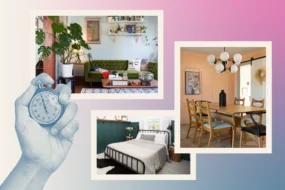
Introduction
Over the past decade, the concept of biophilic design has gained momentum in architecture and interior remodeling. The word “biophilia,” meaning “love of nature,” captures the human need to stay connected with the natural world. As modern lifestyles become more urbanized and technology-driven, homeowners increasingly seek ways to incorporate nature into their living spaces.
Biophilic remodeling goes beyond placing a few houseplants around the room—it’s about thoughtfully weaving natural materials, colors, textures, and even living ecosystems into home design. This approach not only boosts aesthetics but also improves health, productivity, and overall well-being.
This blog explores how you can transform your home with biophilic design, covering strategies, practical remodeling ideas, and the benefits of nature-inspired living.
Why Biophilic Remodeling Matters
- Health Benefits
- Studies show that exposure to natural elements reduces stress, lowers blood pressure, and enhances mood.
- Improved air quality from plants and natural ventilation reduces indoor toxins.
- Cognitive & Emotional Well-being
- Natural light and greenery boost focus and creativity, which is especially important for remote workers.
- Spaces with natural views encourage relaxation and mindfulness.
- Sustainability
- Biophilic design often uses eco-friendly materials like reclaimed wood, stone, and bamboo.
- Reduces reliance on artificial lighting and ventilation by prioritizing daylight and natural airflow.
Core Principles of Biophilic Remodeling
- Natural Light Integration
- Replace heavy curtains with sheer fabrics.
- Install skylights or light wells to bring daylight into darker rooms.
- Use reflective surfaces like glass or light-colored paint to amplify natural light.
- Greenery and Living Walls
- Incorporate vertical gardens in kitchens, living rooms, or patios.
- Place large indoor plants strategically near windows for a seamless indoor-outdoor feel.
- Natural Materials
- Hardwood floors, stone countertops, and clay tiles bring tactile and visual connection to nature.
- Use non-toxic, natural paints and finishes to maintain healthy indoor air.
- Water Elements
- Small indoor fountains or aquariums can create a calming soundscape.
- Outdoor remodeling may include koi ponds, rain gardens, or water walls.
- Biomorphic Forms & Patterns
- Use design patterns that mimic natural forms like waves, leaves, or honeycombs.
- Curved furniture and organic architectural lines soften rigid, man-made spaces.
Practical Remodeling Ideas for Each Room
Living Room
- Add a feature wall with reclaimed wood or stone.
- Use large windows or sliding doors to connect with outdoor views.
- Create an indoor jungle corner with tall plants like fiddle-leaf figs or bamboo palms.
Kitchen
- Install herb gardens on windowsills for fresh cooking ingredients.
- Choose natural stone or wood countertops.
- Incorporate earth-tone color palettes inspired by soil, plants, and sky.
Bedroom
- Position your bed to face natural light in the morning.
- Use calming, nature-inspired hues like sage green, sky blue, or sandy beige.
- Add woven textures such as linen bedding or jute rugs.
Bathroom
- Include natural stone tiles or pebble shower floors.
- Add a skylight or frosted glass for diffused natural lighting.
- Decorate with humidity-loving plants like ferns or orchids.
Outdoor Spaces
- Extend indoor biophilic themes to patios and balconies.
- Add pergolas with climbing vines or vertical gardens.
- Blend outdoor furniture with natural materials like bamboo, teak, or rattan.
The Long-Term Value of Biophilic Remodeling
- Healthier living: Reduced stress and better mental clarity.
- Increased property value: Homes with sustainable and wellness-focused design often attract higher resale prices.
- Lifestyle enhancement: Creates a restorative retreat within your own home.
Conclusion
Biophilic remodeling isn’t just a design trend—it’s a lifestyle shift. By integrating light, greenery, natural materials, and organic forms into your remodel, you can create a home that is not only beautiful but also deeply nurturing.
As people increasingly recognize the importance of sustainable and wellness-focused living, remodeling with nature in mind offers both immediate and long-lasting rewards.
If you’re planning your next remodel, let nature lead the way.







